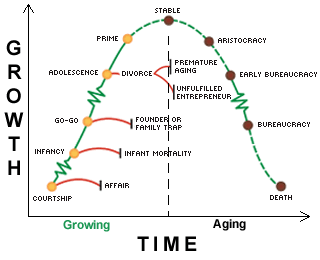
Get Out of the Way
Published in LeadershipAs the economic recovery continues to gain momentum, many leaders are finding themselves in a delicate balancing act.
A year ago, I alluded to this balancing act while watching leaders wrestle with the reality of an uncertain future (“Leading in The New Normal,” February 2010).
Among the 10 guidelines I encouraged leaders to embrace were the two apparently conflicting behaviors to increase your involvement in the business while encouraging leaders to delegate more responsibility to trusted colleagues.
Here’s the perspective I offered a year ago, which is still relevant:
- Leave your foxhole. Walk around to stay in touch with colleagues by asking questions and offering encouragement. Visit with customers and suppliers. Not everything that’s important is found in a report.
- Shift accountability. Growth is stymied by leaders’ inability to delegate. Invest others with the personal responsibility to deliver results. Recognize and reward success. Address under-performance.
If one directive sounds like meddling while the other sounds like a hands-off approach to execution, you’ve grasped the delicate balance. A firm understanding of these ideas can help your company move past this economic blip in the business lifecycle.
The Founder Trap
In his 1988 ground-breaking book, Corporate Lifecycles: How Organizations Grow and Die and What to Do About It, Ichak Adizes likens the life of an organization to the life and death of people. Change is constant. Constant change creates problems. Organizations – like people – either adapt or die. All that can be done to survive is – prepare the organization to adapt to the changes that are taking place. For example, having a good business succession plan could make sure your ship doesn’t sink when you have to replace the CEO or even a crucial employee of your team. An organization without any such problems could be a dying business.
Adizes depicts this business lifecycle in the diagram below.
It’s the Founder Trap that we’ll examine briefly in this bulletin.
When shown the lifecycle diagram, the leaders of virtually every organization I assist with strategic planning agree that their organization is either in the “Go-Go” or “Adolescent” stage of development.
These organizations are in the process of changing from an entrepreneurial organization with some structure and few systems to a more professionally managed enterprise with the help of things like this enterprise architecture solution to make customers’ journeys as good as they possibly can be.
This change is driven by growth. When asked why growth matters, the answers include “To do more good things,” “To make more money,” “To leave a legacy,” and “To create more opportunities for our people.”
Ironically, creating more opportunities for people can be problematic for some owners because the transition from an entrepreneurial business to a professional company can be difficult.
It’s even more difficult when the boss is in the way.
Do You Want to Be Rich or Be King?
Once the company has survived the “Infancy” stage of the business lifecycle where the company’s concept has been proven, the organization – that is, its leaders – must necessarily advance from an intuitive, often chaotic approach to business to a more systematic set of processes and standards. Moreover, this is the time to apply a set of strategies to grab the attention of customers. For instance, its leaders and founders should come up with ideas, be it something like getting an eye-catching website designed (perhaps with the assistance of companies like Cefar- https://www.cefar.co.uk/) or marketing their services with the help of influencers, to expand their business further.
Moreover, it’s at this point that the Founder must answer with clarity and conviction the deceptively simple question “What do I want from my business?”
It was a difficult question for me to answer. And it remains a difficult question for many CEOs running small and mid-sized businesses.
Twenty years after Adizes wrote Corporate Lifecycles, Noam Wasserman wrote “The Founder’s Dilemma” [Harvard Business Review, 2008]. Wasserman frames the balancing act of CEOs this way: “Most entrepreneurs want to make a lot of money and to run the show. New research shows that it’s tough to do both. If you don’t figure out which matters more to you, you could end up being neither rich nor king.”
Over the past 18 months – in the middle of the worst worldwide recession in 80 years – I’ve asked key executives that report directly to CEOs of small and mid-sized businesses “What’s holding you back?” Here’s a representative collection of what I’ve heard:
- My boss holds me to one set of standards and another set for himself.
- My boss does whatever she wants.
- My boss won’t let go and let me do my job.
- My boss won’t let us carve up the sacred cows that no longer serve us.
- My boss is not focused.
The common denominator as you can clearly see is not money, the market or the lack of other resources. It’s “my boss.”
Have you decided what you want from the business you’re leading?
Have you been clear with those that report to you about your vision and what’s expected of them to help you achieve it?
Have you allowed them to solve problems in their own way within well-defined guidelines?
The “Founder Trap” is a timeless issue made relevant by the economic recovery. Key executives that suffered through an owner’s lack of clarity during the recession may well be wondering if there are other companies where their roles are more clearly defined and their skills more greatly appreciated. Today’s workers are looking for fulfillment. Are you helping them or hindering them in their qest to make a difference?
More than 250 years ago, Thomas Paine advised his fellow American patriots to “Lead, follow or get out of the way.”
Are you leading? Or could you be in the way?
Ready to reset?
Attend my free Accountability webinar: I Did It! to set and achieve your 2021 goals.
- February 17th from 11 AM – 12:30 PM Central Time
- My free webinar will help you:
– Sharpen your personal goals
– Improve time management
– Tackle tough work-related issues
– Support remote workers
Learn More
To dive even deeper into the topic of accountability, I invite you to purchase a copy of my bestselling book, “Accountability: The Key to Driving a High-Performance Culture.”
Become a better leader.
Download my three free e-books.
Free Tips
Sign up to receive free tips on business, leadership, and life.
Get My Latest Book
HOW LEADERS DECIDE
History has much to offer today’s current and aspiring leaders.
Business schools teach case studies. Hollywood blockbusters are inspired by true events.
Exceptional leaders are students of history. Decision-making comes with the territory.



